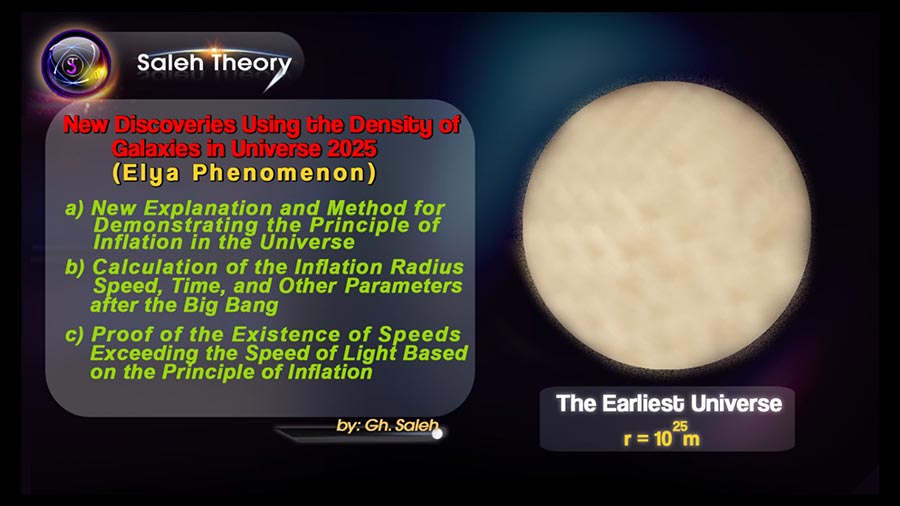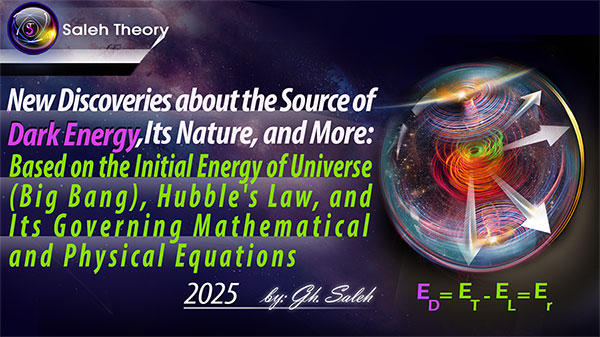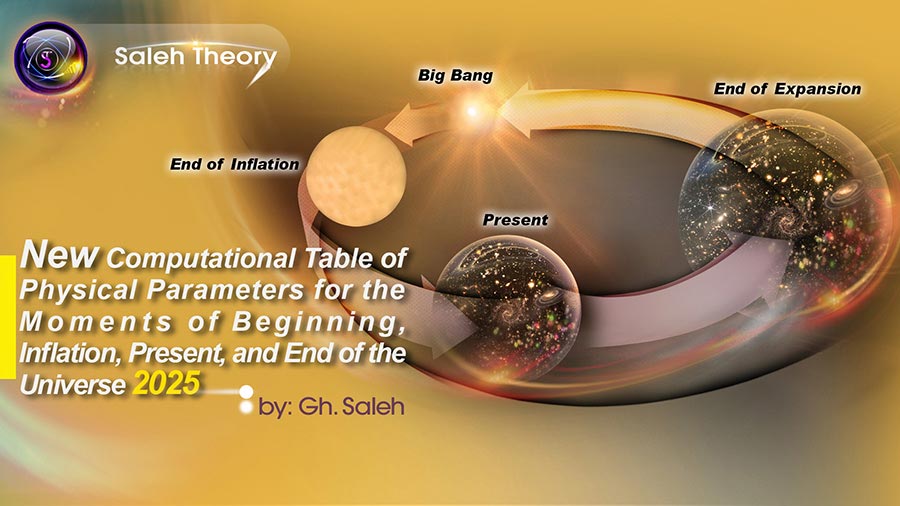
New Discoveries Using the Density of Galaxies in Universe 2025 (Elya Phenomenon)
a) New Explanation and Method for Demonstrating the Principle of Inflation in the Universe
b) Calculation of the Inflation Radius, Speed, Time, and Other Parameters After the Big Bang
c) Proof of the Existence of Speeds Exceeding the Speed of Light Based on the Principle of Inflation
Consider densities of galaxies as follows:
Milky way galaxy: 10−24 𝑔⁄𝑐𝑚3
Andromeda galaxy: 10−25 𝑔⁄𝑐𝑚3
Triangulum galaxy: 10−24 𝑔⁄𝑐𝑚3
Elliptical galaxy: 10−25 𝑔⁄𝑐𝑚3
A thorough examination of galaxies shows a striking uniformity in their densities. This closeness among galaxies can be traced back to their formation from vast clouds of dust and nebulae that emerged following the Big Bang.
In other words, the enormous cloud that formed after the Big Bang can be regarded as the origin of all primordial and modern galaxies. These galaxies evolved from that vast cloud. It can be stated that the initial inflationary phase following the Big Bang is the foundation of the current universe. This phase resulted in the sequential formation of black holes, followed by stars, and then the planets that orbit those stars. The observation that galaxies have similar densities indicates that this characteristic may be a reflection of the universe's primordial density, which existed in the form of a vast cloud. This cloud is known as the inflationary phase that followed the Big Bang.
The total mass of the universe is always conserved ( m = 10 53 kg). During the formation of the first galaxies, the mass that condensed into compact objects—such as black holes, stars, and planets—was equal to the mass of the dust that initially filled the universe. Essentially, galaxy formation involved the accumulation of matter at central points, which led to the clearing of the surrounding areas. As mass becomes more concentrated, the overall volume remains approximately unchanged, the density of galaxies remains constant over time.
The observation that galaxies have similar or nearly equal densities supports the idea that they originated from an extraordinarily large primordial cloud or dust like. Over time, the particles within this cloud coalesced to form the galaxies we see today. An illustrative example of this phenomenon can be observed in the behavior of water on a glass surface. When washing a glass, the remaining water gradually converges to form droplets of varying sizes over time.
We assume a density at the end of the inflationary epoch ρI = 10−26 𝑔⁄𝑐𝑚3 to enhance accuracy. Using this density and the principle of mass conservation in the universe, we can calculate the radius of the universe at the end of the inflationary epoch, rI. Since the Big Bang is conceptualized as an extremely big explosion, we can assume a constant speed of expansion, vLI. Additionally, with the total energy (ET= 10110 J) derived from previous studies, we can also determine the time marking the end of the inflationary epoch, tI.

References:
[1] Saleh, Gh. "New Discoveries about the Source of Dark Energy, Its Nature, and More: Based on the Initial Energy of the Universe (Big Bang), Hubble's Law, and Its Governing Mathematical and Physical Equations (2025)." Saleh Theory, 10 Jan. 2025, https://www.saleh-theory.com/article/new-discoveries-about-the-source-of-dark-energy-its-nature-and-more-based-on-the-initial-energy-of-the-universe-big-bang-hubbles-law-and-its-governing-mathematical-and-physical-equations-2025
 Download PDF
Download PDF Articles


